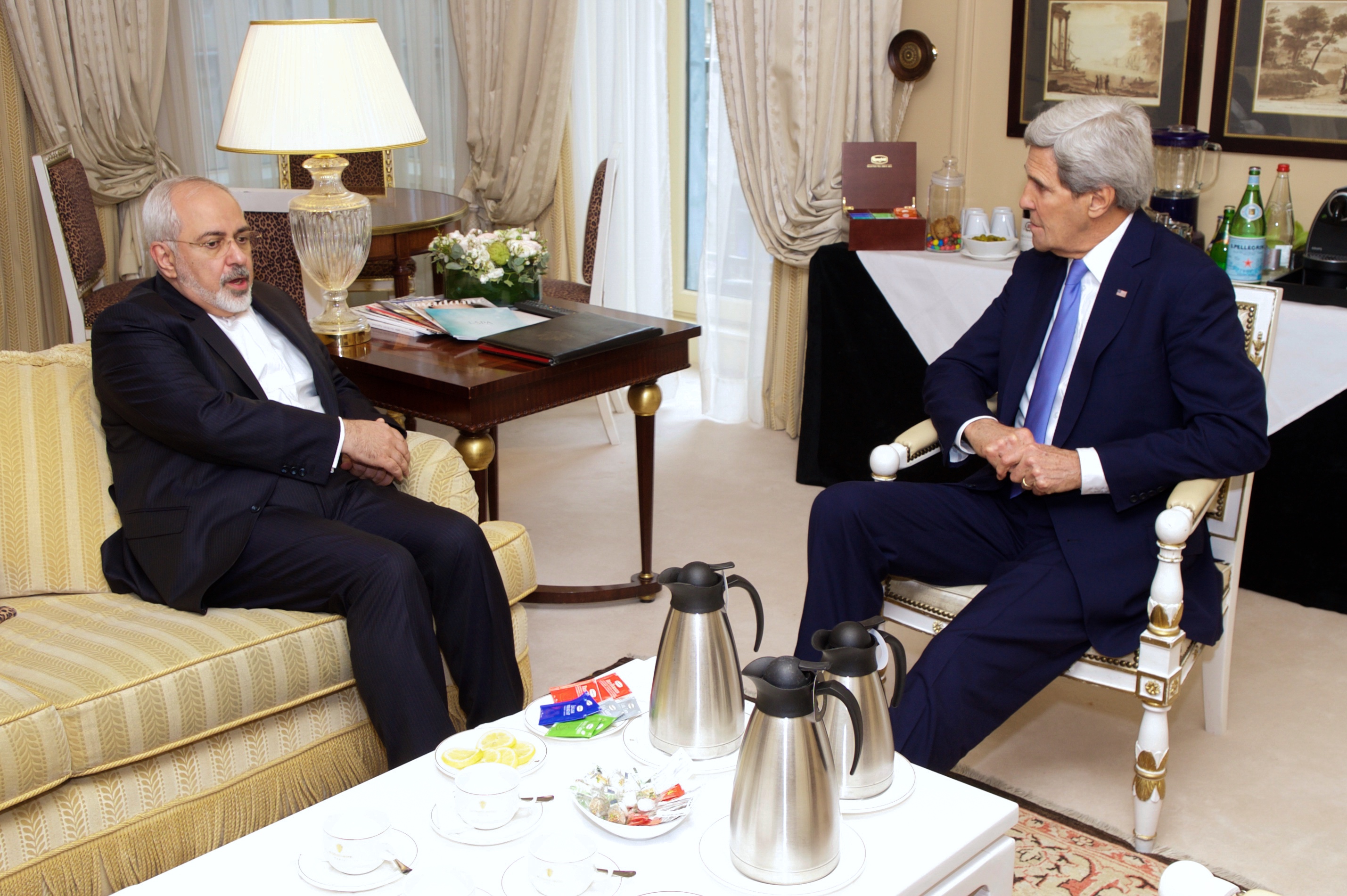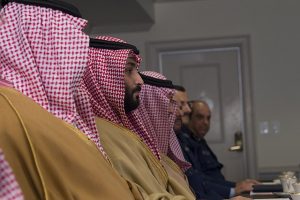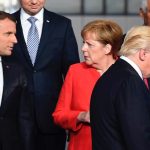by Matthew Shannon
In 1968, as the world was unravelling at the seams, the historian Bradford Perkins published The Great Rapprochement. The book chronicled the U.S. move away from “Anglophobia” and toward “Anglophilia” during the two decades prior to the First World War. Without the “great rapprochement,” a product of geopolitical calculations and cultural affinities, the United States may not have allied with Great Britain during the world wars. What a different world it could have been.
In 2015, as the international community struggles to find solutions to problems ranging from the Islamic State (ISIS or IS) to a tragic refugee crisis, we may be witnessing the early stages of another “great rapprochement,” this time between the United States and Iran.
The first move toward a possible rapprochement came in the form of the Joint Comprehensive Plan of Action (JCPOA), signed in Vienna on July 14, 2015. The JCPOA was the product of 18 months of diplomatic talks between Iran and the P5+1 (the five permanent members of the U.N. Security Council plus Germany), but U.S. Secretary of State John Kerry and Iranian Foreign Minister Javad Zarif were the lead negotiators.
The compromise they reached prohibits the Iranians from weaponizing but allows them to maintain the right to enrich low levels of uranium. The deal thus reaffirms the rights guaranteed by the Nuclear Non-Proliferation Treaty, which Iran signed in 1968. The JCPOA extends Iran’s breakout time from a few months to one year, establishes a rigorous inspection regime under the supervision of the International Atomic Energy Agency, and restricts various aspects of the Iranian nuclear program for between 10 and 15 years. In exchange for complying with these terms, Iran gets more than $100 billion of sanctions relief, a windfall that could do much to rejuvenate the domestic economy. The deal provided both sides the opportunity to claim victory.
Overcoming Opposition
In mid-September the U.S. Congress failed to block the deal negotiated in Vienna from becoming official policy. The debate that took place in the United States over the past two months—the time that Congress had to either approve or reject the deal—broke down along partisan lines. All but four Senate Democrats supported President Barack Obama’s initiative, while all Republican senators lined up against it. Much of the debate centered on Israel’s security concerns and was driven by an intense anti-Iran lobbying campaign. Some legislators expressed concern that Iran would use its unfrozen wealth to support proxies in the region, while America’s Sunni Arab allies in the Persian Gulf exhibited anxiety about the potential regional implications of the JCPOA. Although there is resistance from many quarters, the nuclear deal also enjoys considerable support in the United States and Iran.
Knowledgeable constituencies in the United States have argued forcefully for a diplomatic solution to the nuclear question. They include non-proliferation experts, some of the nation’s leading scientists, top American scholars of Iran, more than a hundred former ambassadors, 60 retired national security officials, a bipartisan group of 75 former lawmakers, and many in the Iranian-American community. The deal enjoys support among America’s European allies, a point that the British, French, and German heads of state underscored in a recent op-ed in The Washington Post. Of those in the United States who support the deal, opinions range from cautious optimism to descriptions of the nuclear diplomacy as the keystone to a détente between Washington and Tehran.
In Iran, the debate between the deal’s opponents and supporters rivals the intensity of the one that took place in the United States. Although there is much to debate, the deal has attracted widespread support, especially among reformers. This is a point that the American public needs to understand. Many of the deal’s opponents in the United States and abroad charge President Obama with hanging Iranian liberals out to dry in exchange for a legacy victory in foreign policy. Nothing could be further from the truth, a point that one of Iran’s leading public intellectuals has repeatedly underscored. In late August, a group of 50 Iranian reformers wrote an open letter to the American people urging them send messages of support for the deal to their elected officials. Iranian pro-democracy activists released a series of videos explaining why they support the resolution of the nuclear crisis and a broader opening between their nation and the world. Others, including some hardliners, see the deal and the accompanying sanctions relief as the best way to improve the quality of life for the Iranian people. The deal will likely be approved in Tehran, despite the inevitable rhetorical posturing.
Paradigm Shift?
Some speculate that 2015 marks an “epochal moment” in the history of the binational relationship that will lead to a comprehensive rapprochement between Iran and the United States. Others talk of a “paradigm shift” in the foreign policies of the United States and Iran. Indeed, President Obama has placed Iran within a larger strategy of “engagement” that has included openings to Myanmar and Cuba. For his part, President Hassan Rouhani has charted a “third way” for Iranian foreign policy that stakes out a middle ground between the poles of confrontation and submission.
At the state-to-state level, if the agreement is implemented, each side must adhere to its terms. As time passes, reciprocal acts of cooperation could produce a “virtuous cycle” of call and response between the United States and Iran (although the writer who used that phrase is skeptical). At this point, attempting to predict whether that cycle will develop is futile. The two countries could work together to fight the Taliban in Afghanistan, combat IS in Iraq, and find a political solution to the civil war in Syria. Or, they could come to blows over Iranian support for Bashar al-Assad in Syria, Hezbollah in Lebanon, and the Houthis in Yemen.
Below the level of the state, any lasting rapprochement necessitates a revolution in the way that Americans think about Iran. Many Americans do not trust Iran, but they don’t know much about it, either. One way to build support for the deal and a larger thaw is to make sure that the American people have access to reliable information about Iran and its people. As one intelligence analyst suggested, “greater knowledge about the agreement and the issues it entails is associated with support for the agreement, and lesser knowledge is associated with opposition to it.” Breaking down American stereotypes about Iran will help expunge the “Iranophobia” that has emerged during the last four decades, not just in Israel, as Haggai Ram has shown, but in the United States, too. Education can help tap the dormant “Persophilia” that existed in the West for centuries prior the Iranian Revolution, as a forthcoming book by Hamid Dabashi demonstrates.
Facilitating Exchange
The best way for Americans to learn about Iran is to go there. Great Britain made it easier for its citizens to travel to Iran when it reopened its embassy in Tehran after a four-year closure. President Rouhani made tourism a focus of his administration shortly after assuming the presidency in 2013. After a slump during the presidency of Mahmud Ahmadinejad, more travelers have been visiting the country. A recent tourism exhibition in Iran reminded the world that “you are invited.” There are safe and reliable ways for Americans to go to Iran, and there may soon be more opportunities for more people to make the trip as the nuclear deal is implemented. There is no better way to reconcile “self” and “other” than through international travel, and a series of individual reconciliations can, one writer recently explained, produce a collective breakthrough between nations.
In addition to tourism, academic contacts can facilitate greater understanding between the two nations. Prior to the Iranian Revolution, there was a tremendous amount of cooperation between American and Iranian universities, in addition to the presence of a large and vibrant Iranian student population in the United States whose numbers climbed above 50,000 by the late 1970s. The nuclear deal could make it possible for the Iranian student population in the United States, which currently stands at 10,000, to grow in size and, in the process, advance intercultural dialogue. President Rouhani loosened restrictions on academic contacts between Iran and the West shortly after coming to office, and the Chronicle of Higher Education has already begun to speculate about the prospect of an “academic détente.” “Academic, scientific exchange is very welcome,” Rouhani said at an event in New York this past Sunday. “The expansion of tourism [by citizens] of both countries is very welcome.”
There are many obstacles, however. Iran’s supreme leader, Ali Khamenei, gave his nuclear negotiators a tentative blessing, but he continues to make statements that do not go over well abroad. In the United States, the 2016 presidential race is heating up, and a broader rapprochement will clearly not happen under Republican leadership. Domestically, the nuclear deal will not likely be scuttled, but hardliners in both countries could effectively prevent it from having a wider impact. Moreover, the United States will not be with its negotiating partners on the frontlines of an economic opening, in part because Europe is better positioned to increase business contacts with a post-sanctions Iran.
We are most likely not witnessing a “great rapprochement” that reaches the level that Perkins identified in Anglo-American relationship of the early 20th century. Still, the nuclear accord between Iran and the P5+1 marks a breakthrough whose long-term ramifications could reorient the balance of power in the Middle East and allow the United States to play a more constructive and cooperative role in the region. It is the necessary first step toward the “dialogue of civilizations” for which Iranian President Mohammad Khatami called 15 years ago.
A better point of reference than the relationship between Washington and London might be the Sino-American relationship of the 1970s, which has since led to the mutual opening of embassies, a large flow of people between the two countries, and an economic relationship that dominates the global economy. Another historical precedent might be the opening between Western and Eastern Europe during the 1970s in the middle of the Cold War. The two sides of the Iron Curtain “until now had no relations,” West German Chancellor Willy Brandt said at the time. “In the future we will have bad relations. It takes a long time for a rusty mechanism to get going again…”
Matthew Shannon is an assistant professor of history at Emory & Henry College. His original research has been published in scholarly journals such as Diplomatic History, International History Review, and The Sixties. He is currently completing a book-length study of educational relations between the United States and Iran during the reign of the last Pahlavi shah.






There is no way back from what began as JCPOA . No doubt it might take time to get to its full speed but it is a one way street in which a turn around would be disastrous. In both countries there are fierce opposition to any rapprochement but the front line of the opposition was overwhelmingly shaken and damaged the moment the JCPOA was signed. In Iran the general public very quickly and cleverly grasped the benefits of a normal relation with the United States and the World very .The Europeans ,public and governments ,already entered the practical phase and are approaching Iran for business opportunities and amiable relations.It is the gullible American public heavily influenced by pro-Israeli lobbies and media who have to be given factual informations to nullify distorted and twisted views and propaganda. Once the American public is convinced the waves of friendly moves would be colossal and unstoppable by the oppositions!!
All in all there is hope for optimism in the new Iran-US relationship.
Mr. Jim Lobe, could you ask someone to extend the time out period for commenting and posting? This is a very annoying problem!!!
A carefully thought-out statement about the power of diplomacy vs other alternatives, many of which are motivated solely by politics in the U.S. Well put!